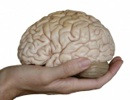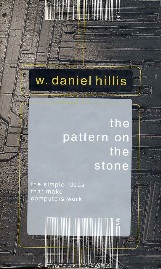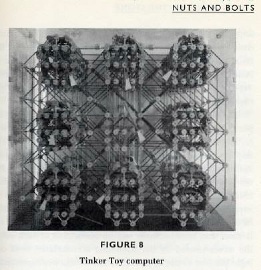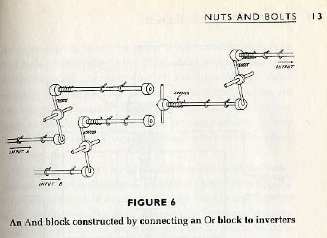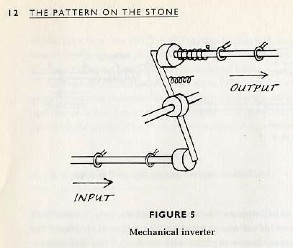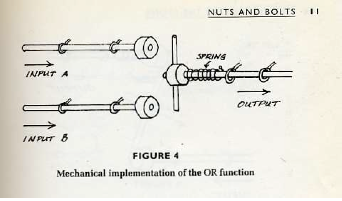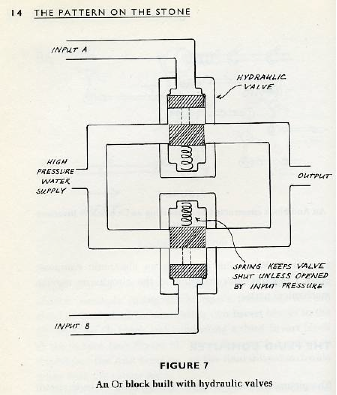MATT’S PHOTOGRAPHY
2008
The Tri-level hypothesis, laid out by Marr (Chap_1) in 1980, breaks down the ‘Information processing’ (of the mind/brain and computers, and other devices) into three distinct levels: Computational, Algorithmic, Implementation. These can be roughly understood as task, software and hardware levels, in computer speak. Importantly, often these levels can be studied independently; and changes can be made at one level without changing the rest of the system.
For instance, there is no reason you couldn’t take a computer, and change it’s Implementation, for instance building it out of wood and plastic instead of silicon. Daniel Hillis built a computer only out of Tinker Toys that plays tic-tac-toe (described here)
It remains an open question as to whether the brain is just a computer, but instead of being built out of metal and plastic, it is built out of flesh. This is one of the central questions of Artificial Intelligence. Perhaps there is no qualitative difference between brains and machines; and, given that, there is no reason to attribute intelligence, or ‘thinking’ to one and not the other.
To get a more concrete idea of what these three levels mean, let’s consider the following example.
Brain Calculator Abacus
Information
processor
Computational Addition Addition Addition
Level (combine quantities)
Algorithmic manipulation of manipulation of binary manipulation of beads
Level arabic numerals code as decimal placeholders
Implementation
Level blood, neurons metal, plastic wood and metal
& electricity & electricity
The most general, computational level, describes what the information processor is meant to do. Addition, Subtraction, ‘Find the red toy in the scene’, ‘Determine which object is larger’, extract meaning from a heard word, etc. There is also the specification of what the input is, and what the output is; and there may be constraints on the types of transformations that are allowed. At the algorithmic level, we describe the transformation by which - the actual computational steps - the device will accomplish this computation. Algorithms act on the form - not the content - of the symbolic representations. The arabic numerals (‘1’, ‘2’, ‘3’, etc) are symbolic representations, so are the beads of the abacus and the bits inside the calculator (symbolic representations of what? Of quantity- quantity of anything.). At the Implementation level, we are interested in the actual hardware; what the machine is made out of.
These three have some interdependency (one can think of certain algorithms that are easier to carry out using neurons than typical silicon), but can often be approached separately. That is, in principle, we can run an algorithm on many different types of hardware (think about the tinker-toy computer, or the water valve computer). That is not to say that it is easy or natural or technically possible to build, for instance, a computer out of water pipes.
e. Tri-level hypothesis
10/26/20
Eliquatuero dip numsan vent lam, conum facillum init lut doloreet ullam etuero od tet adit, comm od tatummy feug tiam velit praese exer aute enit alit, veliqua modit dolorer commod niam onul laore.



